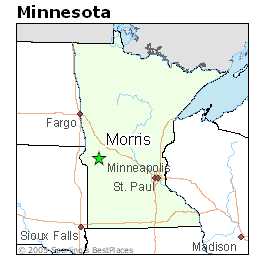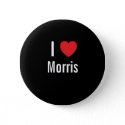(Note: This is the first of two posts on the New York Mets of yesteryear and their big lefthander, Jerry Koosman, who has roots here.)
George Burns as God said to John Denver in "Oh God!" that "the last miracle I performed was the '69 Mets."
A five-game World Series might not normally be considered a classic. But mention the '69 Series to any boomer-age fan and a twinkle is likely to cross the eyes. People had a bigger emotional tie to baseball and the World Series then.
Minnesotans love going to Target Field today but it seems as much for the experience as for the emotional connection to the team. When I was a kid there was an emotional connection.
The '69 World Series between the New York Mets and Baltimore Orioles holds a special place. The World Series today quickly passes even if it arguably has exciting moments.
Dave Barry wrote a few years ago that post-season baseball games are "games played after everyone has gone to bed."
That stuck in my mind because as I get older, I desire to retire earlier.
That stuck in my mind because as I get older, I desire to retire earlier.
The '69 Series was played before the players got substantial power and forced the whole organization into a relentless money-seeking machine. Pushing the games into prime-time for TV became essential.
The team owners in the previous era were "sportsmen," the term used by Bowie Kuhn in his memoirs. Kuhn pointed out that the game's pure appeal was considered essential by those people, even though they were the type who appreciated a profit.
Once the players got that power, the Calvin Griffiths of the world became dinosaurs. I remember Kuhn called them "church mice."
(I read that book thanks to our Morris Public Library.)
(I read that book thanks to our Morris Public Library.)
People my age looked at Kuhn, who was commissioner of baseball, as a heartless sort. As commissioner he did have to advocate for the owners' side as the division with players grew. But as I read his book reflecting on his career, he seemed totally human and feeling, someone with a passion for the game. He presided in a time that seems quaint now. The dollar figures being bandied about were markedly smaller.
We learned with time that the players had no better grip on idealism than the owners. It wasn't enough to obtain some basic rights. The players sought every shred of power they could. This led to the strike of 1994 that had a far-reaching and still very much felt impact on fans' psyche.
The reason owners "looked the other way" and allowed the steroid era to proceed is that they were desperate to shake the effects of that strike. It seemed to work for a while. In my opinion it just cheapened the home run, just like the arena football league cheapens the touchdown.
Barry Bonds is on trial. Players with the steroid stigma are shunned by Hall of Fame voters.
Barry Bonds is on trial. Players with the steroid stigma are shunned by Hall of Fame voters.
A part of us pines for that earlier era when players were simple human beings with a love for the game and seemed to invest their emotions more. Money wasn't their master. Nor for the owners, not that there were holes in anyone's shoes.
Today there's a lawyer or agent around every corner. Every conceivable advantage is sought. And we can't even remember who last year's World Series winner was. I'm sure I was in bed for most of it. The World Series has clearly lost its iconic status.
Mention the 1969 World Series and boomers smile. Can you imagine anyone 40 years from now having such feelings about a Series of today?
For the life of me, I don't understand how major league baseball draws the fans it does, even with our terrific Target Field, when you consider our nation's apparent economic travails. It costs a fortune.
For the life of me, I don't understand how major league baseball draws the fans it does, even with our terrific Target Field, when you consider our nation's apparent economic travails. It costs a fortune.
When I was college-age I'd buy the "dollar size beer," i.e. the "large" size" at Metropolitan Stadium in Bloomington. The dollar figures that appear in Jim Bouton's "Ball Four" tome make your eyes pop out, so small they are (from the year 1969, the year reviewed in that seminal book).
The '69 World Series ranks up there with Woodstock as a defining background event in the maturation of the boomers. As kids we observed the Mets as a chronic but charming loser. They were horrible at their inception. They were the butt of jokes, an image that grew with early manager Casey Stengel.
Then came 1969. Out of nowhere the Mets put a winning formula together. In baseball all you need is one or two pitchers blossoming to make a run. The Mets had Tom Seaver and Jerry Koosman.
Koosman had his roots in West Central Minnesota. He was a native of Appleton and graduated from the West Central School of Agriculture in Morris. He was a big, quiet country boy. He never sought publicity. He just went out and tried to win. Seaver seemed more comfortable with celebrity.
I remember "Koos" saying in 1969 that "you can take the boy out of the country but you can't take the country out of the boy."
It's ironic that this sort of hayseed ended up starring in "The Big Apple" of New York City. Those distractions never seemed to get to him. He was so low-key, the media just seemed to leave him alone. Roger Maris wasn't so lucky a few years earlier.
It's ironic that this sort of hayseed ended up starring in "The Big Apple" of New York City. Those distractions never seemed to get to him. He was so low-key, the media just seemed to leave him alone. Roger Maris wasn't so lucky a few years earlier.
The Mets lurked behind first place for much of the '69 season. The Chicago Cubs were in the unusual position of seeming in command. It was the first season of the East-West divisions. Prior to that season there were two ten-team leagues. The Mets had been doormats, never progressing that much from their absolutely forlorn first year of '62.
The Mets had never placed higher than ninth in the ten-team National League. Even in mid-August of 1969, the Mets looked like anything but a team of destiny. They were in third place, 9 1/2 games in back. Koosman kept going out to the mound dutifully every fourth or fifth day. (Three-day rests were more common, even standard, back then.)
Koosman and his mates caught fire. Whether George Burns had any role we won't ever know. The Mets won 39 of their last 50 games. Seaver was the Cy Young Award winner.
Koosman might have benefited from having the spotlight off of him. But "Koos" performed in the post-season like he was Sandy Koufax. I remember watching on TV at the time.
Seaver lost game #1 of the '69 Series. The Mets played the Orioles who had beaten our Minnesota Twins in the American League playoff series. Koosman was on the mound when the Mets wrapped up the World Series in five games.
The Mets took the lead with two runs in the eighth inning of Game 5. Koosman pitched the complete game win and was given the game ball by teammate Cleon Jones who caught a fly ball for the last out.
Koosman was inducted into the New York Mets Hall of Fame in 1989. He attended the 40th reunion of the '69 team at Citi Field on August 22, 2009.
- Brian Williams - morris mn Minnesota - bwilly73@yahoo.com























No comments:
Post a Comment